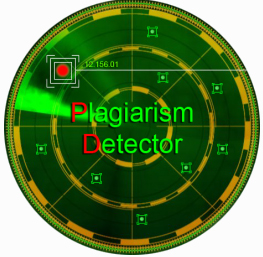DETECTION OF HUMAN GENDER FROM EYES IMAGES USING DNN APPROACH
Abstract
Gender identification is a crucial technique that can enhance the performance of authentication systems. Due to its variety of applications, human gender detection, a component of face recognition, has drawn a lot of interest. Previous studies on gender identification have relied on static features of the body, such as the face, eyebrows, hands, bodies, fingernails, etc. The abundance of face picture datasets available today has led to the development of several effective machine learning and deep learning techniques. When using classical machine learning techniques, it is essential to extract precise features from datasets in order to obtain favorable classification results. c Deep neural networks have the ability to explore hidden and unexpected feature sets, improving classification performance above conventional machine learning techniques. It can address the issue of the variable nature of facial signals between origins, which makes accurate feature extraction challenging. The effectiveness of the pre-trained DNN models is examined in this study when there is a dearth of data. Due to this issue, only the areas of the one eye picture with brows were considered in this study to classify the gender, as opposed to the entire face. The performance findings indicate that EfficientNetb7 is the best model and give better accuracy as compared to Xception, InceptionResNetV2, VGG16 and Resnet50.
Full Text:
PDFReferences
Abdalrady, N. A., & Aly, S. (2020, February). Fusion of multiple simple convolutional neural networks for gender classification. In 2020 International Conference on Innovative Trends in Communication and Computer Engineering (ITCE), 251-256. IEEE.
Althnian, A., Aloboud, N., Alkharashi, N., Alduwaish, F., Alrshoud, M., Kurdi, H.: Face gender recognition in the wild: an extensive performance comparison of deep-learned, hand-crafted, and fused features with deep and traditional models. Appl. Sci. 11(1), 89 (2021)
Akbulut, Y., Şengür, A., & Ekici, S. (2017, September). Gender recognition from face images with deep learning. In 2017 International artificial intelligence and data processing symposium (IDAP), 1-4. IEEE.
Arora, S., & Bhatia, M. P. S. (2018, July). A robust approach for gender recognition using deep learning. In 2018 9th International Conference on Computing, Communication and Networking Technologies (ICCCNT),1-6. IEEE.
Cimtay, Y., Alkan, B., & Demirel, B. (2021). Fingerprint Pattern Classification by Using Various Pre-Trained Deep Neural Networks. Avrupa Bilim ve Teknoloji Dergisi, (24), 258-261. Color-feret-database. (12 October 2021). https://www.nist.gov/itl/products-and-services/
Danisman, T., Bilasco, I. M., & Martinet, J. (2015). Boosting gender recognition performance with a fuzzy inference system. Expert Systems with Applications, 42(5), 2772-2784.
Huang, G. B., Ramesh, M., Berg, T., & Learned-Miller, E. (2007). Labeled faces in the wild: a database for studying face recognition in unconstrained environments. Univ. Massachusetts, Amherst, MA, USA.
Ranjan, R., Patel, V. M., & Chellappa, R. (2017). Hyperface: A deep multi-task learning framework for face detection, landmark localization, pose estimation, and gender recognition. IEEE transactions on pattern analysis and machine intelligence, 41(1), 121-135
Raza, M., Sharif, M., Yasmin, M., Khan, M. A., Saba, T., & Fernandes, S. L. (2018). Appearance based pedestrians’ gender recognition by employing stacked auto encoders in deep learning. Future Generation Computer Systems, 88, 28-39.
Danisman, T., Bilasco, I. M., & Martinet, J. (2015). Boosting gender recognition performance with a fuzzy inference system. Expert Systems with Applications, 42(5), 2772-2784.
Eidinger, E., Enbar, R., & Hassner, T. (2014). Age and gender estimation of unfiltered faces. in IEEE Transactions on Information Forensics and Security, 9 (12), 2170-2179, doi: 10.1109/TIFS.2014.2359646. Eyes-rtte. (23 September 2021). https://www.kaggle.com/pavelbiz/eyes-rtte
DOI: https://doi.org/10.33365/jti.v17i2.2457
Refbacks
- There are currently no refbacks.
Copyright (c) 2023 Muhammad Waqas Arshad

This work is licensed under a Creative Commons Attribution-ShareAlike 4.0 International License.
JURNAL TEKNOINFO
Published by Universitas Teknokrat Indonesia
Organized by Prodi S1 Informatika FTIK Universitas Teknokrat Indonesia
W: http://ejurnal.teknokrat.ac.id/index.php/teknoinfo/index
E : teknoinfo@teknokrat.ac.id.
Jl. Zainal Abidin Pagaralam, No.9-11, Labuhan Ratu, Bandarlampung

This work is licensed under a Creative Commons Attribution-ShareAlike 4.0 International License.
Jumlah Pengunjung : View Teknoinfo StatsCounter



















